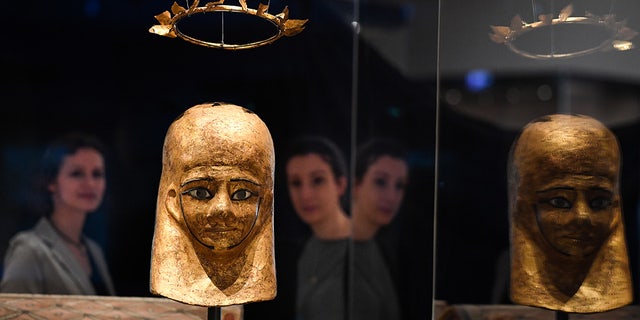UK museums shy away from using ‘mummy’ to describe ancient Egyptian remains: it’s ‘dehumanizing’
“A dead Egyptian body, or a live British matriarch,” read the clue that Alex Trebek gave Jeopardy! contestants on a February 2015 episode.
“What is a mummy?” one of the contestants replied.
Though Trebek accepted the response, a museum administrator in the U.K. today might tut-tut this exact wording.
The National Museums Scotland in Edinburgh and the Great North Museum: Hancock in Newcastle have decided to avoid using the term “mummy,” preferring “mummified remains” or “mummified person” instead.
“The word ‘mummy’ is not incorrect, but it is dehumanizing, whereas using the term ‘mummified person’ encourages our visitors to think of the individual,” explained a spokeswoman from the National Museums Scotland to the Daily Mail.
THE HAGIA SOPHIA: A LANDMARK THAT WAS CONVERTED FROM A CHURCH TO A MOSQUE, TO A MUSEUM, AND THEN MOSQUE AGAIN
“Where we know the name of an individual we use that, otherwise we use ‘mummified man, woman, boy, girl or person’ because we are referring to people, not objects,” she added.
Jo Anderson, assistant keeper of archeology at the Great North Museum, explained the language change in a lengthy blog post in 2021. The blog specifically focused on Irtyru, an ancient woman who has been on display in Newcastle for a considerable period.
“The word ‘mummy’ now often evokes the image of a supernatural creature or monster,” explained Anderson, adding that she hopes these ancient men and women will be treated as “real humans who were once alive and had very specific beliefs about how their bodies should be treated after death.”
The British Museum in London rebutted a claim by the Daily Mail that they had banned the term themselves but agreed with the approach of their colleagues in Edinburgh and Newcastle.

FRENCH CITY BELIEVES MADONNA MAY OWN PAINTING LOST DURING WWI, ASKS FOR LOAN
Separate from the linguistic debate, whether it is ethical to display human bodies in this way remains a live issue.
Anderson described several ways in which the remains of Irtyru were desecrated, including the unwrapping of her bandages by three surgeons in front of a ticketed audience and the application of shellac.
“A large bolt and ring were attached through the cranium to enable her to be hung upright. At the same time, a large metal staple was inserted into Irtyru’s spine, which secured her to the baseboards of the coffin beneath,” wrote Anderson.
Even mummies that haven’t been handled like this are displayed outside their original context, another point of contention.
Meanwhile, archeologists in Saqqara, Egypt have uncovered a Pharaonic tomb containing what may be the oldest and most complete mummy yet to be discovered in the country, according to a Thursday statement from the excavation team leader.
The 4,300-year-old mummy has been identified as a man named Hekashepes. He was found at the bottom of a 15-metre shaft in a recently uncovered group of fifth and sixth-dynasty tombs.
Whether Hekashepes will ever go on display remains to be seen.
Reuters contributed to this report.
Read the full article Here


